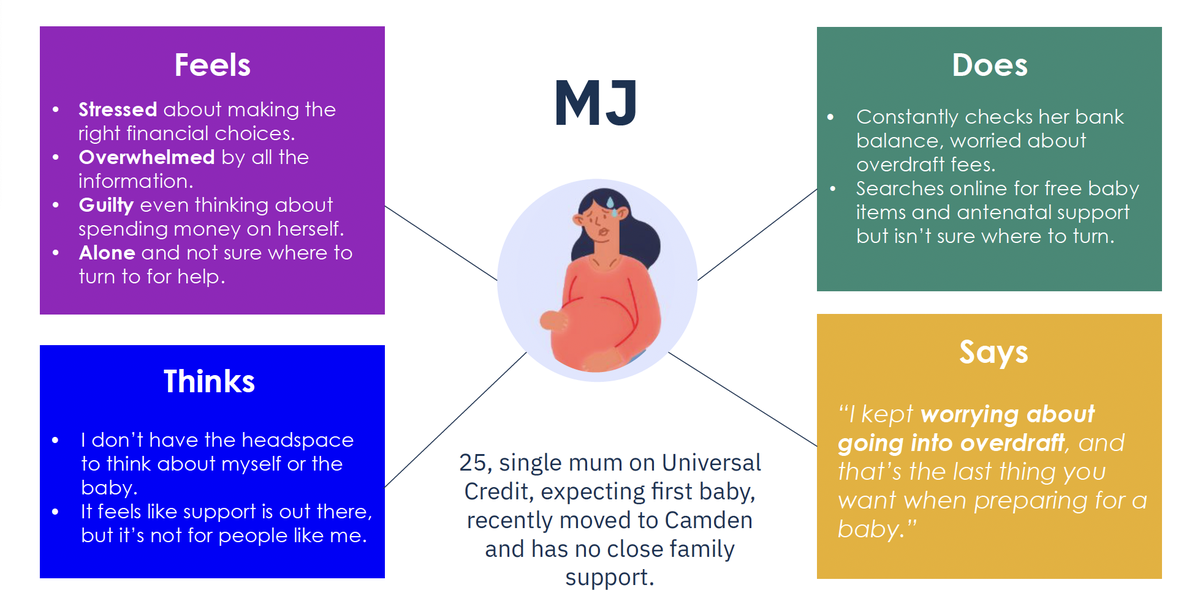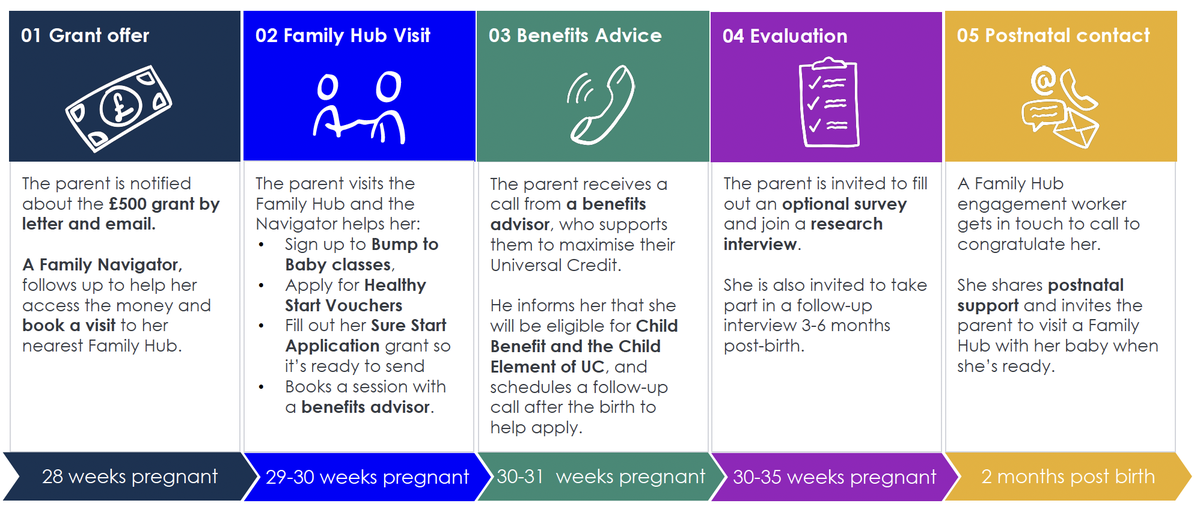Designing for impact
A simple idea, centred on families.
The Family Hubs Pregnancy Grant aims to provide proactive, holistic and personalised support to pregnant people experiencing financial hardship. To achieve this, we had to put trust in parents, remove barriers to access and design services that feel welcoming, sensitive, and non-stigmatising.
From the outset, we grounded our design in the lived experience of families, drawing on insights from user research with parents in Camden. We used a composite persona – MJ, a 25-year-old first-time mum on Universal Credit who feels overwhelmed by her situation – to represent the perspectives of those who often feel excluded from traditional services (see the pen portrait).
Her experience informed the end-to-end user journey by helping us challenge assumptions, reduce friction and build trust from the first interaction (see the user journey).
Importantly, this also meant designing a programme involving multiple teams in the council, to ensure that what we offer parents is centred around their needs, not around institutional structure and budgets. We know that financial support in pregnancy can improve maternal and infant health (see Part 1). But we also know that there are many other types of support that councils can offer, and different families have different needs. We wanted to design a programme that brings together all that the council can offer to help parents prepare for their baby’s arrival.
Turning that idea into action required thoughtful design, strong cross-sector collaboration and a shared commitment from senior leaders to doing things differently. This section outlines Camden’s approach, the principles behind it and what we hope to achieve, along with tools to help you design a version that works in your own local context.
Our design principles
We built this pilot around three core principles.
1. Lead with cash-first support
We believe families know best what they need. Unconditional cash empowers people and gives them the flexibility to meet their needs in the way that works best for them, whether that’s paying off debts, buying essentials, doing something that supports their wellbeing, or in another way entirely. There are no strings attached and no requirement to report how the money is spent.
This approach is grounded in a strong evidence base. Research shows that financial support during pregnancy can reduce maternal stress and improve outcomes for babies, especially in low-income households. See Part 1 for a summary of this research.
2. Minimise barriers to access
We aimed to reach families who might benefit most, including those not already engaging with services. By linking existing NHS and benefits data (see Part 3), we could proactively identify eligible families, reduce drop-off in engagement and avoid the stigma of needing to apply for means-tested support.
To keep it accessible and non-intrusive, parents do not need to apply. Instead, pregnant people are contacted proactively and can receive the grant as cash or by bank transfer. This flexibility acknowledges varying comfort levels with technology and reinforces our commitment to meeting families where they are.
3. Build trust through a relational approach
Our user research revealed that many families may not engage with Children’s Centres and Family Hubs (referred to collectively as Family Hubs throughout this toolkit) due to feeling overwhelmed, uncertain about where to go for support during pregnancy, or a perception that the services are not designed for them. To address this, we paired the cash with a warm introduction to local services.
To do this, we introduced a novel Family Navigators service (see Part 2). Family Navigators are named, trusted people who reach out with a friendly phone call or a low-pressure meet-up at the local Family Hub. The aim isn’t to push services, but to build trust and give families the confidence to explore support on their own terms.
Things to consider








